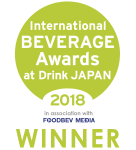Lactococcus is a type of lactic acid bacteria that, while not as common in the human gut as Lactobacillus or Bifidobacterium, contributes to human health in a variety of ways. Lactococcus plays a role in digestion, immune function, and gut barrier integrity, as well as inhibiting harmful bacteria and regulating inflammation. Let’s take a look at these in more detail:
- Digestion and nutrient absorption. Lactococcus aids digestion by breaking down complex carbohydrates and proteins, making it easier for the body to absorb nutrients.1Roy K, Anba J, Corthier G, Rigottier-Gois L, Monnet V, Mistou MY. Metabolic adaptation of Lactococcus lactis in the digestive tract: the example of response to lactose. J Mol Microbiol Biotechnol. 2008;14(1-3):137-44. doi: 10.1159/000106093.2Drouault S, Corthier G, Ehrlich SD, Renault P. Survival, physiology, and lysis of Lactococcus lactis in the digestive tract. Appl Environ Microbiol. 1999 Nov;65(11):4881-6. doi: 10.1128/AEM.65.11.4881-4886.1999.
- Immune regulation. Lactococcus interacts with gut cells, helping to stimulate and regulate immune responses, reducing inflammation, and defending the body against harmful pathogens.3Jin SW, Lee GH, Jang MJ, Hong GE, Kim JY, Park GD, Jin H, Kim HS, Choi JH, Choi CY, Lee SG, Jeong HG, Hwang YP. Immunomodulatory Activity of Lactococcus lactis GCWB1176 in Cyclophosphamide-Induced Immunosuppression Model. Microorganisms. 2020 Aug 2;8(8):1175. doi: 10.3390/microorganisms8081175.4Kimoto H, Mizumachi K, Okamoto T, Kurisaki J. New Lactococcus strain with immunomodulatory activity: enhancement of Th1-type immune response. Microbiol Immunol. 2004;48(2):75-82. doi: 10.1111/j.1348-0421.2004.tb03490.x.
- Pathogen inhibition. Lactococcus prevents harmful bacteria from growing and causing illness by producing lactic acid and other antimicrobial substances.5Song AA, In LLA, Lim SHE, Rahim RA. A review on Lactococcus lactis: from food to factory. Microb Cell Fact. 2017 Apr 4;16(1):55. doi: 10.1186/s12934-017-0669-x.6Tavares LM, de Jesus LCL, da Silva TF, Barroso FAL, Batista VL, Coelho-Rocha ND, Azevedo V, Drumond MM, Mancha-Agresti P. Novel Strategies for Efficient Production and Delivery of Live Biotherapeutics and Biotechnological Uses of Lactococcus lactis: The Lactic Acid Bacterium Model. Front Bioeng Biotechnol. 2020 Nov 4;8:517166. doi: 10.3389/fbioe.2020.517166.
- Gut barrier support. Lactococcus contributes to a healthy gut lining, which prevents harmful substances and pathogens from entering the bloodstream.7Darby TM, Owens JA, Saeedi BJ, Luo L, Matthews JD, Robinson BS, Naudin CR, Jones RM. Lactococcus Lactis Subsp. cremoris Is an Efficacious Beneficial Bacterium that Limits Tissue Injury in the Intestine. iScience. 2019 Feb 22;12:356-367. doi: 10.1016/j.isci.2019.01.030.8Crystal R. Naudin, Joshua A. Owens, Lauren C. Askew, Ramsha Nabihah Khan, Christopher D. Scharer, Jason D. Matthews, Liping Luo, Jiyoung Kim, April R. Reedy, Maria E. Barbian, Rheinallt M. Jones, bioRxiv 2021.12.02.471025; doi: 10.1101/2021.12.02.471025
What are the best sources of Lactococcus?
Lactococcus is a genus of lactic acid bacteria that is widely used in the dairy industry; hence dairy products like kefir are perhaps the best-known source of Lactococcus. Cheeses, buttermilk, and fermented milk products are also rich in Lactococcus, which converts lactose into lactic acid, giving these products their characteristic tart flavour. Other sources of Lactococcus include fermented vegetables like sauerkraut and pickles, sourdough bread, and some traditionally fermented meat products.9Cavanagh D, Casey A, Altermann E, Cotter PD, Fitzgerald GF, McAuliffe O. Evaluation of Lactococcus lactis Isolates from Nondairy Sources with Potential Dairy Applications Reveals Extensive Phenotype-Genotype Disparity and Implications for a Revised Species. Appl Environ Microbiol. 2015 Jun 15;81(12):3961-72. doi: 10.1128/AEM.04092-14.
What foods can Lactococcus feed on?
Lactococcus is a lactic acid bacterium famously used in the dairy industry because of its ability to break down lactose, the sugar found in milk. This process leads to the production of lactic acid, which is responsible for the sour taste and preservation of dairy products. Apart from lactose, Lactococcus can also metabolise other simple sugars, such as glucose and fructose, as well as certain types of oligosaccharides, e.g. galactooligosaccharides.10Li W, Ren M, Duo L, Li J, Wang S, Sun Y, Li M, Ren W, Hou Q, Yu J, Sun Z, Sun T. Fermentation Characteristics of Lactococcus lactis subsp. lactisIsolated From Naturally Fermented Dairy Products and Screening of Potential Starter Isolates. Front Microbiol. 2020 Aug 4;11:1794. doi: 10.3389/fmicb.2020.01794.11Yu, L., & O’Sullivan, D. J. (2014). Production of galactooligosaccharides using a hyperthermophilic β-galactosidase in permeabilized whole cells of Lactococcus lactis. J Dairy Sci, 97(2), 694-703. doi: 10.3168/jds.2013-7492.
Where to find Lactococcus in the Chuckling Goat Gut Microbiome Test
The Chuckling Goat Gut Microbiome Test features a general score for Lactococcus as a group (genus). It also provides readings for Lactococcus lactis, a Lactococcus species known to have an impact on human health. You will find Lactococcus in the “Lactic acid bacteria” section of the “Probiotics” report.
Synonyms: LAB, lactic acid-producing bacteria, Lactobacillales, lactic-acid-producing microorganisms, Lactococcus species
Important disclaimer
The Chuckling Goat Gut Microbiome Handbook is an educational resource built to translate complex science into plain English. The information provided on this page is not intended to be a substitute for professional medical advice, diagnosis, or treatment. Always seek the advice of your GP or other qualified health provider with any questions you may have regarding a medical condition. Always check with your GP for interactions with medications/health conditions before changing your diet or starting to take food supplements.
References
- 1Roy K, Anba J, Corthier G, Rigottier-Gois L, Monnet V, Mistou MY. Metabolic adaptation of Lactococcus lactis in the digestive tract: the example of response to lactose. J Mol Microbiol Biotechnol. 2008;14(1-3):137-44. doi: 10.1159/000106093.
- 2Drouault S, Corthier G, Ehrlich SD, Renault P. Survival, physiology, and lysis of Lactococcus lactis in the digestive tract. Appl Environ Microbiol. 1999 Nov;65(11):4881-6. doi: 10.1128/AEM.65.11.4881-4886.1999.
- 3Jin SW, Lee GH, Jang MJ, Hong GE, Kim JY, Park GD, Jin H, Kim HS, Choi JH, Choi CY, Lee SG, Jeong HG, Hwang YP. Immunomodulatory Activity of Lactococcus lactis GCWB1176 in Cyclophosphamide-Induced Immunosuppression Model. Microorganisms. 2020 Aug 2;8(8):1175. doi: 10.3390/microorganisms8081175.
- 4Kimoto H, Mizumachi K, Okamoto T, Kurisaki J. New Lactococcus strain with immunomodulatory activity: enhancement of Th1-type immune response. Microbiol Immunol. 2004;48(2):75-82. doi: 10.1111/j.1348-0421.2004.tb03490.x.
- 5Song AA, In LLA, Lim SHE, Rahim RA. A review on Lactococcus lactis: from food to factory. Microb Cell Fact. 2017 Apr 4;16(1):55. doi: 10.1186/s12934-017-0669-x.
- 6Tavares LM, de Jesus LCL, da Silva TF, Barroso FAL, Batista VL, Coelho-Rocha ND, Azevedo V, Drumond MM, Mancha-Agresti P. Novel Strategies for Efficient Production and Delivery of Live Biotherapeutics and Biotechnological Uses of Lactococcus lactis: The Lactic Acid Bacterium Model. Front Bioeng Biotechnol. 2020 Nov 4;8:517166. doi: 10.3389/fbioe.2020.517166.
- 7Darby TM, Owens JA, Saeedi BJ, Luo L, Matthews JD, Robinson BS, Naudin CR, Jones RM. Lactococcus Lactis Subsp. cremoris Is an Efficacious Beneficial Bacterium that Limits Tissue Injury in the Intestine. iScience. 2019 Feb 22;12:356-367. doi: 10.1016/j.isci.2019.01.030.
- 8Crystal R. Naudin, Joshua A. Owens, Lauren C. Askew, Ramsha Nabihah Khan, Christopher D. Scharer, Jason D. Matthews, Liping Luo, Jiyoung Kim, April R. Reedy, Maria E. Barbian, Rheinallt M. Jones, bioRxiv 2021.12.02.471025; doi: 10.1101/2021.12.02.471025
- 9Cavanagh D, Casey A, Altermann E, Cotter PD, Fitzgerald GF, McAuliffe O. Evaluation of Lactococcus lactis Isolates from Nondairy Sources with Potential Dairy Applications Reveals Extensive Phenotype-Genotype Disparity and Implications for a Revised Species. Appl Environ Microbiol. 2015 Jun 15;81(12):3961-72. doi: 10.1128/AEM.04092-14.
- 10Li W, Ren M, Duo L, Li J, Wang S, Sun Y, Li M, Ren W, Hou Q, Yu J, Sun Z, Sun T. Fermentation Characteristics of Lactococcus lactis subsp. lactisIsolated From Naturally Fermented Dairy Products and Screening of Potential Starter Isolates. Front Microbiol. 2020 Aug 4;11:1794. doi: 10.3389/fmicb.2020.01794.
- 11Yu, L., & O’Sullivan, D. J. (2014). Production of galactooligosaccharides using a hyperthermophilic β-galactosidase in permeabilized whole cells of Lactococcus lactis. J Dairy Sci, 97(2), 694-703. doi: 10.3168/jds.2013-7492.













